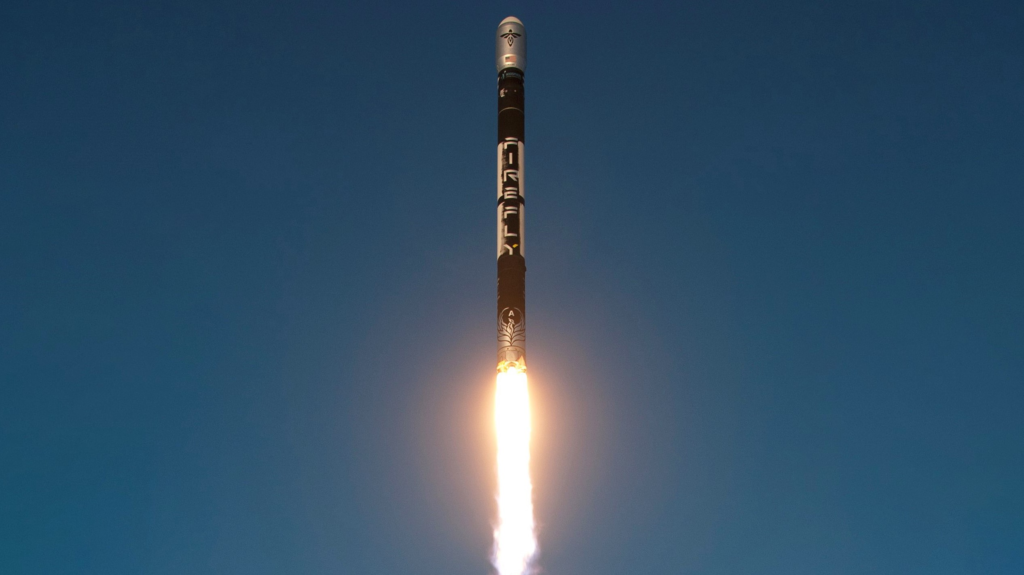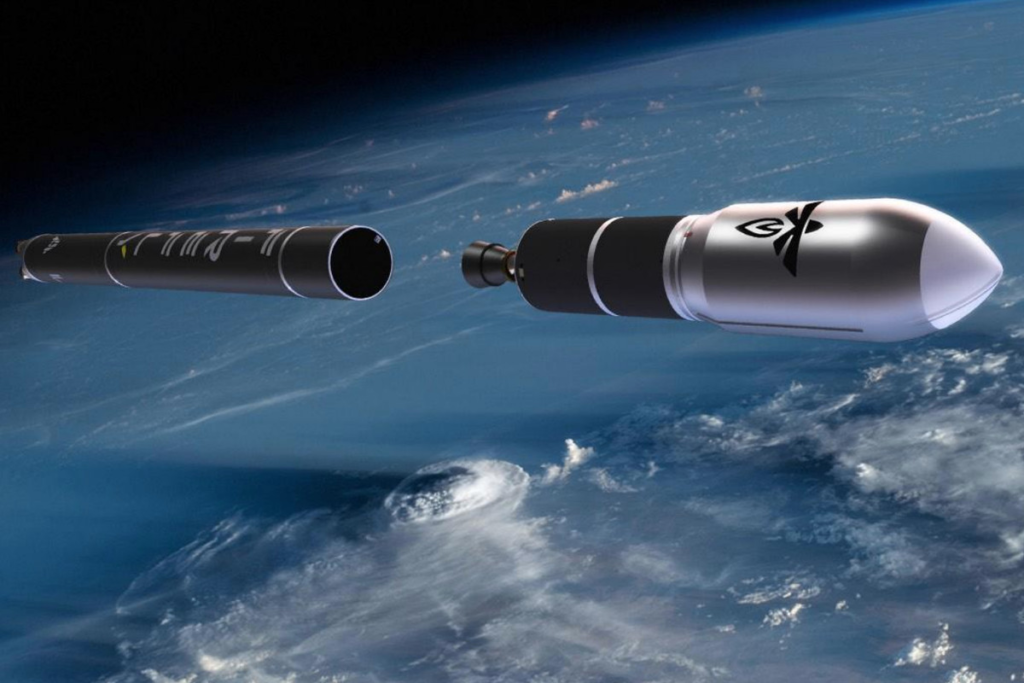
Firefly Aerospace Launch Scrub, New Dates, & Alpha Overview
Reaching orbit for the first time is an immensely difficult task that few companies and agencies around the world have successfully completed. Firefly Aerospace is a company working towards this ambitious goal using the Alpha launch vehicle. While the first attempt just over a year ago was unsuccessful and ended with an explosion, the company is confident this time around applying what they learned the first time.
Over the last two days, Firefly Aerospace had launch opportunities for the small lift launch vehicle. This included a 4 hour launch window on the 11th and 12th. Unfortunately, on both days the launch was scrubbed due to various reasons including weather, and a slight propellant complication. This being said, the company has already announced the next launch opportunities, and are continuing to work towards reaching orbit.
As Alpha continues to get closer towards its biggest milestone yet, the rocket highlights a vast amount of opportunities and future depending on this mission. A challenge that could have a very big impact on not only the future of this launch vehicle, but also Firefly Aerospace as a company. Here I will go more in-depth into the previous two day’s attempts, upcoming launch dates, a closer look at the Alpha launch vehicle, and more.
Scrubbed Launches

The last few days have been very eventful for Firefly Aerospace as they prepared and got close to the second launch of Alpha multiple times. The updates began on September 11th which was the first official launch opportunity for Alpha. Not long after the start of the launch period Firefly Aerospace tweeted saying, “Update: We aborted at the top of our launch window. We have a 4-hour window today and will work on the issue to see if we can recycle. More updates soon.” Thanks to the longer launch window, Firefly had another opportunity later in the day however the launch was eventually scrubbed for the day. They tweeted again mentioning, “Our launch today was scrubbed due to a drop in helium pressure. The Firefly team is on it, and we will use our launch window tomorrow which opens at 3:00 PM PDT.” In terms of the drop in helium pressure, it looked as if it was only a small completion as the company was confident it would be fixed within a day.
Firefly confirmed this not long after early on the 12th with a tweet pointing out, “The team worked through the issue and is ready to go. The launch window opens at 3:00 PM PST. Waiting on status of current weather conditions. Stand by for more details. While the first attempts on the 11th hadn’t worked out for various reasons, Firefly was prepared for success yesterday on the 12th. Unfortunately, something that was out of Firefly Aerospace’s control ended up cutting the day 2 launch attempt short. The company tweeted one last time saying, “Launch Update: The Firefly team working @SLDelta30 made the decision to scrub today’s launch due to violation of wind constraints. Firefly has secured Sept. 19th and 20th on the range for the next launch attempts. Alpha stands ready to launch. Stay tuned for more information.”
The launch site where all of this is happening is SLC-2 at Vandenberg Space Force Base. Located in California, Firefly intends to conduct Polar and SSO launches to high inclinations from this launch site. Specifically, it can support launches from 58 to 144 degrees of inclination. This is also the same site as Firefly’s first attempt just over a year ago. While the weather got in the way this time around, the upcoming launch opportunities on the 19th and 20th give plenty of time for a second launch. It’s clear that Firefly is taking its time and working to ensure everything is perfect before Alpha takes off. This attention to detail could help ensure a successful second launch attempt which is very important for the company. On Alpha’s first launch last year, during the two minutes and twenty-five seconds of flight, Firefly obtained a substantial amount of flight data that has been applied to the current rocket sitting on the pad. Ideally, right around a week from now, we will see this work and dedication pay off.
Alpha Overview

Now that we know more about the recent launch attempts and what caused them to scrub, we can take a closer look at what makes the Alpha launch vehicle special. With it expected to launch not long from now, it helps to know exactly what Firefly’s goal and plan is for the rocket. Alpha is a small-lift launch vehicle with a payload capacity to low Earth orbit of 1,170 kilograms. The upcoming launch is named To The Black, and is officially Firefly’s second technology demonstration flight that will attempt to launch multiple satellites to LEO. In terms of the mission profile, Alpha will first insert into an elliptical transfer orbit, coast to apogee, and perform a circularization burn.
Firefly points out that Alpha offers the highest payload capacity for the lowest cost per kilogram in its vehicle class. In addition, using tried and true, flight-proven rocket technologies, Alpha is 100% manufactured in the USA and designed to be the most reliable small satellite launcher available. Alpha’s pump-fed, regeneratively-cooled engines use standard LOx/RP, and its avionics systems, such as the flight computer and communication system, employ COTS components with established flight heritage. In terms of the rocket structure, modern advances in carbon composite materials are used to create strong, lightweight primary structures such as propellant tanks. All of which helps Firefly make high quality components at a reasonable price.
One interesting aspect of this launch vehicle that improves what it’s capable of is named the SUV or Service Utility Vehicle. While this is not being used on this initial demonstration flight, it’s expected to play a very valuable role in Alpha’s future missions. Many people are familiar with Rocket Lab’s Electron kick stage and Photon spacecraft, Firefly’s SUV is very similar. The Space Utility Vehicle opens up orbits never before accessible with a small launch vehicle alone. When paired with Alpha, SUV can carry multiple payloads well out of LEO to distances as far as the Moon. Providing propulsion, uplink/downlink services, and up to 2 kW of solar power, SUV is capable of satisfying a wide variety of mission architectures lasting up to 5 years. Recently we have seen Rocket Lab have major success with its third stage equipment and Firefly could as well depending on the success and future of Alpha.
One feature of the Alpha launch vehicle that stands out is its propulsion. The first stage is powered by 4 Reaver engines and the second stage uses a single Lightning engine. It’s important to point out that one of the first stage engines losing thrust was the reason for Alpha’s first unsuccessful launch attempt last year. Specifically, an initial review of the flight data indicated that an electrical issue caused the shutdown of one of the four first stage Reaver engines. This eventually led to the termination of the launch vehicle in flight. On Alpha, both stages use common designs: copper regen-cooled LOx/RP-1 thrust chambers, a simple tap-off cycle which drives single shaft turbopumps, nozzle-mounted turbine exhaust manifolds, and hydraulic actuators. Innovations in Firefly engines include its simple “Crossfire” injector, tap-off geometry, dual-mounted electrically actuated, trimmable propellant main valves, and ultra-compact horizontal turbopump mounting. The upper stage engine, “Lightning,” includes a turbine-exhaust cooled refractory metal high area ratio nozzle extension. The first stage “Reaver” engines feature simple single axis gimballing. Consistent with the overall Alpha vehicle design, cost and performance are traded and optimized in Lightning and Reaver components to provide the best payload performance value.
Firefly was originally founded to provide economical and reliable access to space through the design, manufacture, and operation of launch vehicles and spacecraft. In order to reduce risk and increase reliability, Firefly employs a vertically integrated manufacturing process while leveraging high maturity COTS components. They are confident the technologies employed in the flagship Alpha vehicle provide a clear pathway for future incremental improvements in capability, and expansion of the Firefly Beta launch vehicle. What’s so exciting about Firefly Aerospace is its plans for the future. Alpha is just the beginning as they work towards even bigger and more ambitious plans in the future. This not only includes a bigger rocket named Beta, but spaceplanes and so much more. However, before any of this, the company needs to get Alpha up and running on a consistent basis. The first step includes a successful launch in a week from marking the first time they reach orbit.
Conclusion
Firefly Aerospace has been working hard to reach orbit for the first time using its Alpha launch vehicle. In September of 2021 the company had its first launch attempt which showed promising results but was unsuccessful in the grand scheme of things. While the launch attempts in the previous two days were scrubbed, the company has already scheduled the next launch dates only days away. We will have to wait and see how it progresses and the impact it has on the space industry.
